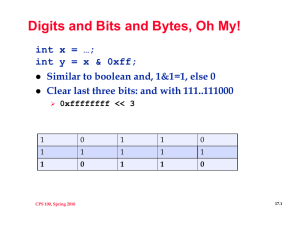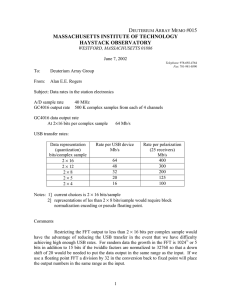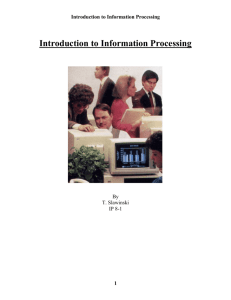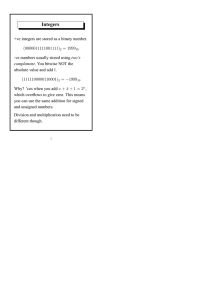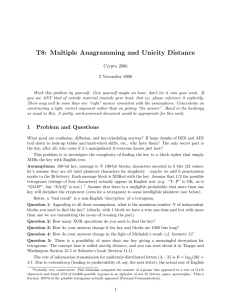Example
advertisement
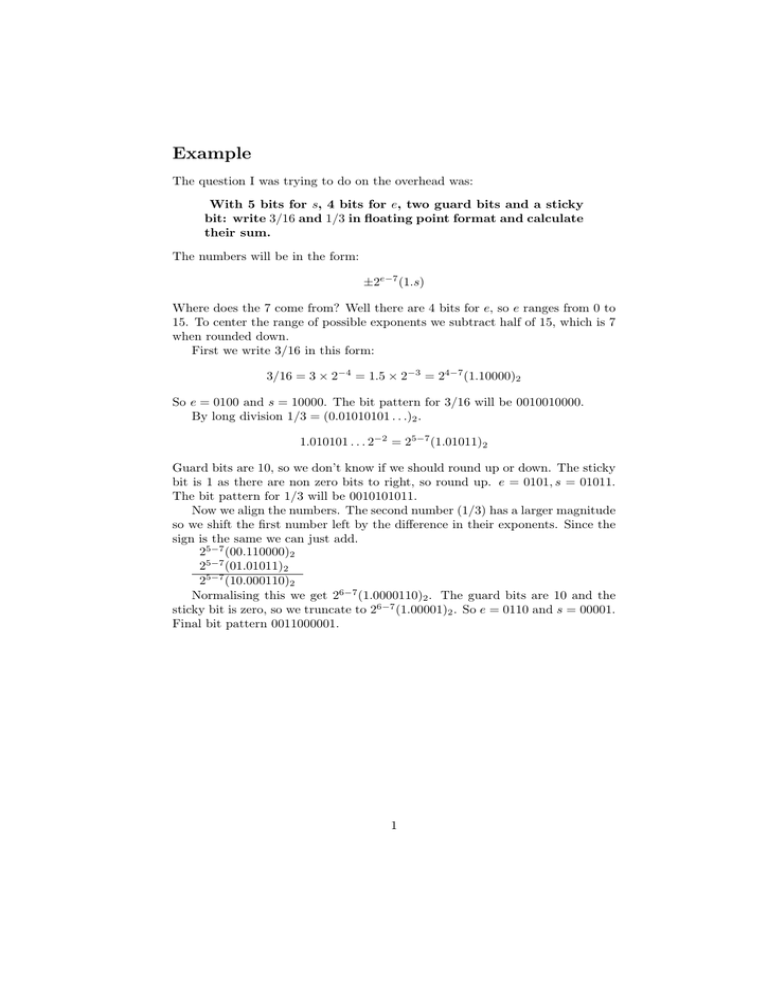
Example The question I was trying to do on the overhead was: With 5 bits for s, 4 bits for e, two guard bits and a sticky bit: write 3/16 and 1/3 in floating point format and calculate their sum. The numbers will be in the form: ±2e−7 (1.s) Where does the 7 come from? Well there are 4 bits for e, so e ranges from 0 to 15. To center the range of possible exponents we subtract half of 15, which is 7 when rounded down. First we write 3/16 in this form: 3/16 = 3 × 2−4 = 1.5 × 2−3 = 24−7 (1.10000)2 So e = 0100 and s = 10000. The bit pattern for 3/16 will be 0010010000. By long division 1/3 = (0.01010101 . . .)2 . 1.010101 . . . 2−2 = 25−7 (1.01011)2 Guard bits are 10, so we don’t know if we should round up or down. The sticky bit is 1 as there are non zero bits to right, so round up. e = 0101, s = 01011. The bit pattern for 1/3 will be 0010101011. Now we align the numbers. The second number (1/3) has a larger magnitude so we shift the first number left by the difference in their exponents. Since the sign is the same we can just add. 25−7 (00.110000)2 25−7 (01.01011)2 25−7 (10.000110)2 Normalising this we get 26−7 (1.0000110)2 . The guard bits are 10 and the sticky bit is zero, so we truncate to 26−7 (1.00001)2 . So e = 0110 and s = 00001. Final bit pattern 0011000001. 1





